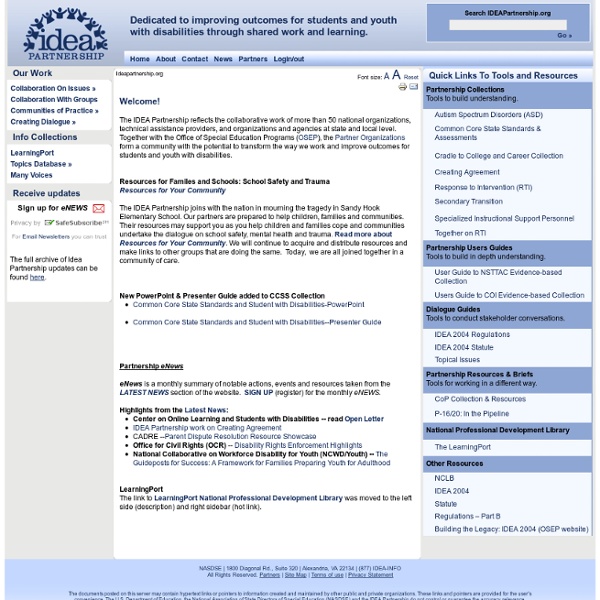



Special Education and Disability Rights Blog Special Education Law Blog Special Education Today lesson plans for students and educators Common Core Implementation Kit enables the creation of a Common Core State Standards aligned lesson plan with a few easy clicks. Common Core operates from within Word 2013 and provides daily learning targets for Common Core State Standards, along with instructional notes, student friendly “I Can” statements, vocabulary lists, differentiation ideas, activity ideas, assessment ideas, common student misconceptions, and links to open educational resources aligned to the standards. Save time planning lessons and locating resources for your students The Common Core Implementation Kit is a free tool that makes it easy for teachers to create Language Arts and Math lesson plans aligned to the Common Core State Standards all from within Microsoft Word 2013. To create a lesson plan, a teacher selects the desired learning target and adds it to the lesson plan document with a click. System requirements
home SMARTBoards in Special Education Classrooms Advantages of SMARTBoards in Special Education Classrooms SMARTBoards support inclusive classrooms by offering students many ways to learn information, express ideas, and demonstrate understanding. The SMARTBoard also allows teachers to address different learning styles - visual, auditory and kinesthetic. This technology engages all types of students and facilitates differentiated instruction. A SMARTBoard helps students with autism, for example, improve communication skills through group collaboration. The interactive whiteboard gives educators the ability to present things visually, and provide ease in creating and altering activities to control students’ learning. For students with physical disabilities, the SMARTBoard’s touch-sensitive surface gives all students the opportunity to participate in learning. Benefits to Teachers Teachers enjoy using the SMARTBoard to create visually engaging and interactive lessons.
9 insightful videos about using SMART Boards in the Classroom The 2nd post in a series focused on learning about Interactive Whiteboards in the Classroom. Last week we kicked off this series by learning the basics about what an interactive whiteboard is, and researched which brands are the most popular today. After discovering that the SMART Board brand from Smart Technologies controls more of the marketplace than all of the other brands combined, we then started looking into the different types of SMART Boards and their features and functionality. Today we move that effort forward by providing a number of videos that help us better understand how these devices work and what we can do with them in the classroom. I’ve grouped these videos into a two categories. How SMART Boards can be used in the classroom: Technical Functionality (Installation, Configuration, Use):Here’s a few videos for the technical folks, or for teachers who might have to do their own set up and configuration and want to get a sense of what it takes to set these systems up. Next?
Classroom resources 10 Myths About Immigration Editor’s note: While originally published in 2011, this story was updated in 2015 to reflect current statistics, policies and conditions in the United States. Click here for a detailed list of sources. Myths about immigration and immigrants are common. Here are a few of the most frequently heard misconceptions—along with information to help you and your students separate fact from fear. When students make statements that are mistaken or inaccurate, one response is to simply ask, “How do you know that’s true?” Most immigrants are here illegally.With so much controversy around the issue of undocumented immigrants, it’s easy to overlook the fact that most of the foreign-born people living in the United States have followed the rules and have permission to be here. It's just as easy to enter the country legally today as it was when my ancestors arrived.Ask students when their ancestors immigrated and if they know what the entry requirements were at the time.